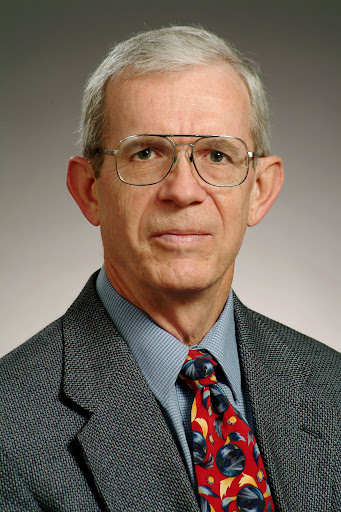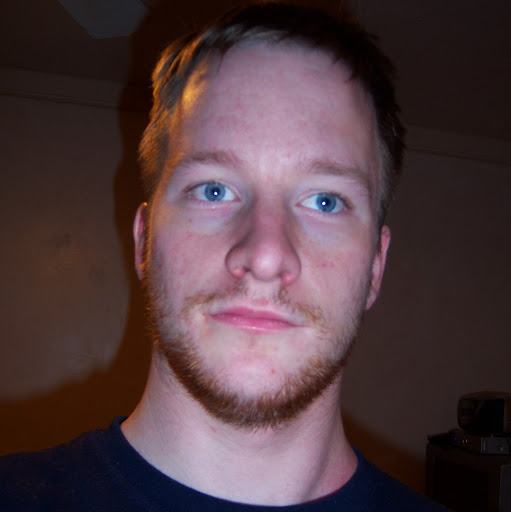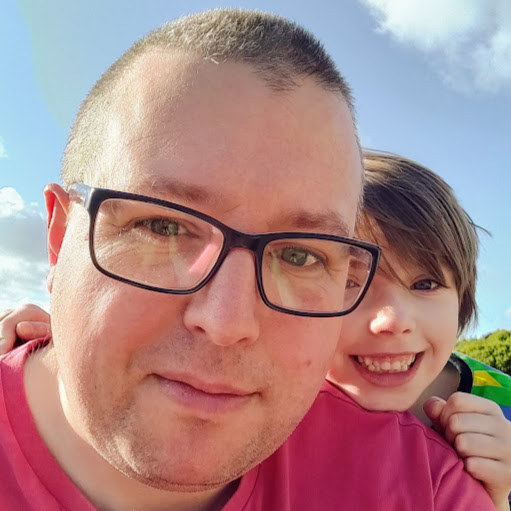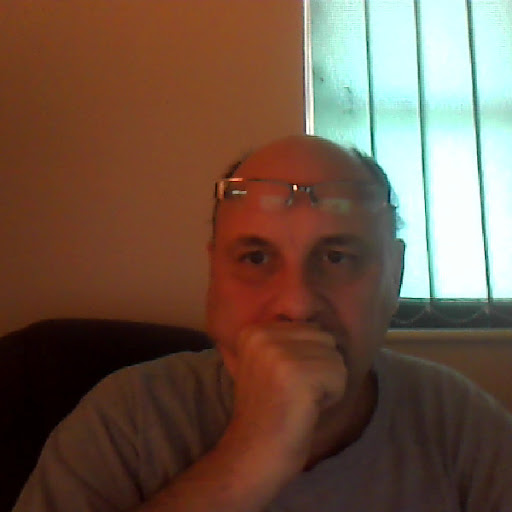Paul H Holloway
age ~81
from Gainesville, FL
- Also known as:
-
- Paul Howard Holloway
- Howard P Holloway
- Paul Paul
- Phone and address:
-
3520 NW 143Rd St, Gainesville, FL 32606
352 332-0339
Paul Holloway Phones & Addresses
- 3520 NW 143Rd St, Gainesville, FL 32606 • 352 332-0339
- Newberry, FL
- Alachua, FL
Isbn (Books And Publications)
-
Consolation In Philippians: Philosophical Sources And Rhetorical Strategy
view source -
Author:Paul A. Holloway
-
ISBN #:0521036240
-
One Small Step: An Introduction To Environmental Studies
view source -
Author:Paul D. Holloway
-
ISBN #:0919600603
-
Handbook Of Compound Semiconductors: Growth, Processing, Characterization, And Devices
view source -
Author:Paul H. Holloway
-
ISBN #:0815513747
-
Characterization Of Metals And Alloys
view source -
Author:Paul H. Holloway
-
ISBN #:0750692464
-
Compound Semiconductors: Growth, Processing, And Devices
view source -
Author:Paul H. Holloway
-
ISBN #:0849301653
-
Advanced Processing And Characterization Technologies: Fabrication And Characterization Of Semiconductor Optoelectronic Devices And Integrated Circu
view source -
Author:Paul H. Holloway
-
ISBN #:0883189100
Name / Title
Company / Classification
Phones & Addresses
President
DREHER-HOLLOWAY, INC
Z HOLLOWAY INVESTMENTS, LLC
3520 NW 143 St, Gainesville, FL 32606
Resumes

Paul Holloway
view sourceSkills:
Science
Social Studies
Social Studies

Chief Scientist
view sourceLocation:
686 Museum Rd, Gainesville, FL 32611
Industry:
Research
Work:
University of Florida Aug 1978 - Nov 2013
Distinguished Professor
Nanophotonica, Inc. Aug 1978 - Nov 2013
Chief Scientist
Ge Oct 1966 - Aug 1968
Physical Metallurgist
Distinguished Professor
Nanophotonica, Inc. Aug 1978 - Nov 2013
Chief Scientist
Ge Oct 1966 - Aug 1968
Physical Metallurgist
Education:
Rensselaer Polytechnic Institute 1968 - 1972
Doctorates, Doctor of Philosophy, Materials Science Florida State University 1966 - 1970
Master of Science, Masters, Bachelors, Bachelor of Science, Engineering
Doctorates, Doctor of Philosophy, Materials Science Florida State University 1966 - 1970
Master of Science, Masters, Bachelors, Bachelor of Science, Engineering
Skills:
Materials Science
Spectroscopy
University Teaching
Physics
Nanotechnology
R&D
Characterization
Research
Afm
Experimentation
Chemistry
Nanomaterials
Powder X Ray Diffraction
Spectroscopy
University Teaching
Physics
Nanotechnology
R&D
Characterization
Research
Afm
Experimentation
Chemistry
Nanomaterials
Powder X Ray Diffraction

Paul Holloway
view source
Paul Holloway
view source
Paul Holloway
view source
Paul Holloway
view sourceLocation:
United States

Paul Holloway
view sourceLocation:
United States
Us Patents
-
Methods For Preparing Rare-Earth Oxysulfide Phosphors, And Resulting Materials
view source -
US Patent:6843938, Jan 18, 2005
-
Filed:Mar 13, 2003
-
Appl. No.:10/388140
-
Inventors:Paul H. Holloway - Gainesville FL, US
Mostafa Abboudi - Tangier, MA -
Assignee:University of Florida Research Foundation, Inc. - Gainesville FL
-
International Classification:C09K 1184
-
US Classification:2523014S
-
Abstract:The present invention provides new and useful methods for preparing rare-earth oxysulfide phosphors. Advantageously, in accordance with the methods of the subject invention, rare-earth oxysulfide phosphors can be prepared with lower reaction temperatures and fewer processing steps than methods currently in use. In a preferred embodiment, the process of the subject invention involves blending two different rare-earth nitrate salts and a sulfidizing agent. Then, the mixture is heated at relatively low temperatures until the rare-earth oxysulfide phosphor is produced.
-
High Resolution Multi-Lens Imaging Device
view source -
US Patent:6954310, Oct 11, 2005
-
Filed:Sep 25, 2003
-
Appl. No.:10/670679
-
Inventors:Paul H. Holloway - Gainesville FL, US
Mark R. Davidson - Florahome FL, US
Olga Alexander Shenderova - Raleigh NC, US
Gary E. McGuire - Carrboro NC, US
David B. Tanner - Gainesville FL, US
Arthur Hebard - Gainesville FL, US -
Assignee:University of Florida Research Foundation, Inc. - Gainesville FL
-
International Classification:G02B027/10
G02B021/36
G02B013/16
H04N005/225 -
US Classification:359619, 359363, 348335
-
Abstract:An imaging device () can include a plurality of lenses () mounted on a multi-dimensional support structure (), a plurality of optical detectors () corresponding to the plurality of lenses for capturing an optical signal from at least two lenses among the plurality of lenses, and a processor () for combining the optical signal from at least two lenses to form an image and electronically controlling the field of view and a resolution of the image. The plurality of lenses each can include an array of sub-wavelength apertures or a plurality of photon sieve lenses ().
-
Method Of Producing Nanosized Oxide Powders
view source -
US Patent:7135161, Nov 14, 2006
-
Filed:Sep 4, 2003
-
Appl. No.:10/656717
-
Inventors:Paul H. Holloway - Gainesville FL, US
Mostafa Abboudi - Tangier, MA -
Assignee:University of Florida Research Foundation, Inc. - Gainesville FL
-
International Classification:C01G 1/00
-
US Classification:4235921, 423263, 4235931, 42359414, 423604, 423622, 423633, 977775, 977777, 977811
-
Abstract:A method of forming metal oxide powders includes the steps of solid state mixing of at least one metal nitrate salt, such as Fe(NO)or a combination of metal nitrate salts such as Zn(NO),6HO and Ga(NO), xHO, and at least one reducing organic acid, such as tartaric or citric acid. The mixture is heated to form a metal oxide powder, such as alpha-iron oxide (α-FeO) or a mixed metal powder such as zinc gallate phosphor (ZnGaO). A metal oxide precursor intermediate can be formed and then heated to form the metal oxide powder.
-
Phototherapy Bandage
view source -
US Patent:7304201, Dec 4, 2007
-
Filed:Dec 10, 2003
-
Appl. No.:10/732086
-
Inventors:Paul H. Holloway - Gainesville FL, US
Gary McGuire - Chapel Hill NC, US
Olga A. Shenderova - Raleigh NC, US
John Reynolds - Gainesville FL, US
Kirk S. Schanze - Gainesville FL, US
James Boncella - Los Alamos NM, US -
Assignee:University of Florida Research Foundation, Inc. - Gainesville FL
International Technology Center - Raleigh NC -
International Classification:A61F 13/00
-
US Classification:602 41, 602 42, 607 88
-
Abstract:A phototherapy bandage capable of providing radiation to a localized area of a patient for accelerating wound healing and pain relief, photodynamic therapy, and for aesthetic applications. The phototherapy bandage may include a flexible light source that is continuous across the bandage for providing a selected light, such as a visible light, a near-infrared light, or other light, having substantially similar intensity across the bandage. The bandage may also be flexible and capable of being attached to a patient without interfering with the patient's daily routine. The phototherapy bandage may easily conform to the curves of a patient and may come in a variety of exterior shapes and sizes.
-
Differential Reflection Spectroscopy System And Method For Detecting Explosives And Other Target Materials
view source -
US Patent:7368292, May 6, 2008
-
Filed:Apr 11, 2006
-
Appl. No.:11/401791
-
Inventors:Rolf E. Hummel - Gainesville FL, US
Ann Marie Fuller - Gainesville FL, US
Claus Schollhorn - Gainesville FL, US
Paul H. Holloway - Gainesville FL, US -
Assignee:University of Florida Research Foundation, Inc. - Gainesville FL
-
International Classification:G01N 33/22
G01N 21/55
G01N 21/33
G01J 1/32
G01J 1/42
G01J 3/08
G01J 3/42
G01J 3/433 -
US Classification:436171, 250372, 356 51, 356217, 356303, 356319, 356326, 356447, 422 8205, 422 8209, 436107, 436110
-
Abstract:A system and method for identifying explosive or other target materials includes the steps of irradiating a first location and a second location spaced apart from the first location from a sample suspected of including explosives with ultraviolet, visible or infrared light, measuring reflected light emanated from the first sample location (R) and reflected light emanated from the second sample location (R), and calculating a normalized difference in reflectivity (ΔR/ ), wherein =(R+R)/2 is an average reflectivity. A differential reflection spectrum (DRS) is then generated for the sample where ΔR=R−Ris the difference of the reflectivities of the first and the second sample location. One or more explosives if present are identified in the sample based on comparing the DRS for said sample to at least one reference DRS.
-
Partially Passivated Quantum Dots, Process For Making, And Sensors Therefrom
view source -
US Patent:7807265, Oct 5, 2010
-
Filed:May 14, 2007
-
Appl. No.:11/748200
-
Inventors:Swadeshmukul Santra - Orlando FL, US
Subir Kumar Sabui - Orlando FL, US
Paul H. Holloway - Gainesville FL, US
Heesun Yang - Kwanak-Gu, KR -
Assignee:University of Central Florida Research Foundation, Inc. - Orlando FL
-
International Classification:B32B 5/16
-
US Classification:428403, 428407, 977773, 977813, 977824, 977834
-
Abstract:A partially passivating core shell particle includes a luminescent nanocrystal core, and a partially passivating semiconducting core shell on a surface of the nanocrystal. The shell allows selected analytes to alter a luminescent response of the core shell particle. A quantum dot-based sensing system includes at least one partially passivating core shell particle, a light source for irradiating the partially passivating core shell particle, and a light detector for receiving emissions from the particle, wherein emissions from the core shell particle change in response to the presence of at least one analyte.
-
Method And Apparatus For Producing Near-Infrared Radiation
view source -
US Patent:7928278, Apr 19, 2011
-
Filed:Jun 12, 2002
-
Appl. No.:10/170942
-
Inventors:Kirk S. Schanze - Gainesville FL, US
John R. Reynolds - Gainesville FL, US
James M. Boncella - Gainesville FL, US
Paul H. Holloway - Gainesville FL, US
Benjamin Scott Harrison - Cantonment FL, US
Tim Foley - Gainesville FL, US
Sriram Ramakrishnan - Bangalore, IN -
Assignee:University of Florida Research Foundation, Inc. - Gainesville FL
-
International Classification:A61F 13/00
-
US Classification:602 41, 602 42
-
Abstract:The subject invention pertains to a method, apparatus, and composition of matter for producing near-infrared (near-IR) radiation. The subject invention can incorporate a polymer and a metal-containing compound, wherein the metal-containing compound can incorporate a metal-ligand complex, wherein when the metal-ligand complex becomes excited, energy is transferred from the ligand to the metal, wherein, the energy transferred to the metal by sensitization is emitted as near-infrared radiation. In a specific embodiment, the subject invention relates to a composition of matter having a luminescent polymer and a metal containing compound where the metal containing compound incorporates a metal-ligand complex such that the absorption spectrum of the metal-ligand complex at least partially overlaps with the emission spectrum of the luminescent polymer. As the absorption spectrum of the metal-ligand complex at least partially overlaps with the emission spectrum of the luminescent polymer, when the luminescent polymer becomes electronically excited energy can be transferred from the luminescent polymer to the metal-ligand complex. At least a portion of the energy transferred from the luminescent polymer to the metal-ligand complex can then be emitted by the metal-ligand complex as near-infrared radiation.
-
Nanoparticles And Their Use For Multifunctional Bioimaging
view source -
US Patent:8128908, Mar 6, 2012
-
Filed:May 2, 2005
-
Appl. No.:10/590590
-
Inventors:Swadeshmukul Santra - Orlando FL, US
Paul H. Holloway - Gainesville FL, US
Robert A. Mericle - Brentwood TN, US
Heesun Yang - Gainesville FL, US
Glenn A. Walter - Gainesville FL, US -
Assignee:University of Florida Research Foundation, Inc. - Gainesville FL
-
International Classification:A61B 5/00
A61B 5/055 -
US Classification:424 96, 424 93, 424 932, 424 9322, 424 9323, 424 935, 424 936, 977774
-
Abstract:The present invention relates to fluorescent, radio-opaque and magnetic quantum nanoparticles, useful as multifunctional contrast agents or probes for in vivo bioimaging, and methods of their use. The invention provides for multifaceted bioimaging (e. g. , intra-arterial pre-operative brain mapping and broad based in vivo diagnostic imaging), including imaging of various cell types, such as stem cells.
Wikipedia References

Paul Holloway

Paul Dabossman Holloway
view source
Paul Holloway Jr.
view source
Paul Samuel Holloway
view source
Jean Paul Holloway
view source
Paul Holloway
view source
Paul Holloway Stevens
view source
Paul Ashely Holloway
view source
Paul Bergstrom Holloway
view sourceMyspace
Flickr
Plaxo

Paul Holloway
view sourceLondon, EnglandEvent Director at TOC Events Worldwide Past: Marketing Manager at HSBC Asset Finance

Paul Holloway
view sourceNewport City. South Wales
Classmates

Paul Holloway
view sourceSchools:
Salado High School Salado TX 1996-2000
Community:
Carolyn Wilson, Kelly Bennight

Paul Holloway
view sourceSchools:
Salado High School Salado TX 1996-2000
Community:
Carolyn Wilson, Kelly Bennight

Paul Holloway (Same)
view sourceSchools:
Rhinebeck High School Rhinebeck NY 1967-1971
Community:
David Lea, Nettie Hill, Tammy Giffels

Paul Holloway
view sourceSchools:
Oakdale Junior High School Oakdale CA 1985-1986
Community:
Abigail Cahoon

Paul Holloway
view sourceSchools:
J. E. Johnson High School Prentiss MS 1956-1960
Community:
Dan Mcinnis, Queen Barnes, Carolyn Hathorn, Letha Barron, Luvenia Powell

Paul Holloway
view sourceSchools:
Ocoee Elementary School Ocoee FL 1968-1972
Community:
Todd Grimes, Shari Walters, Don Campbell, James Griffin

Paul Holloway
view sourceSchools:
Broadview High School Broadview Afghanistan 1990-1995
Community:
Bob Fraser, Norman Inkster

Paul Holloway (James)
view sourceSchools:
Broadview High School Broadview Afghanistan 1991-1995
Community:
Bob Fraser, Norman Inkster
Googleplus

Paul Holloway
Lived:
Gainesville FL
Work:
Univ of Florida - Distinguished Professor
Education:
Rensselaer Polytechnic Institute - Materials Engineering, Florida State University - Engineering Science
Tagline:
Dept of Matls Science & Engng, University of Florida

Paul Holloway
Work:
W. Rudd Service

Paul Holloway

Paul Holloway

Paul Holloway

Paul Holloway

Paul Holloway

Paul Holloway
Youtube
Get Report for Paul H Holloway from Gainesville, FL, age ~81














